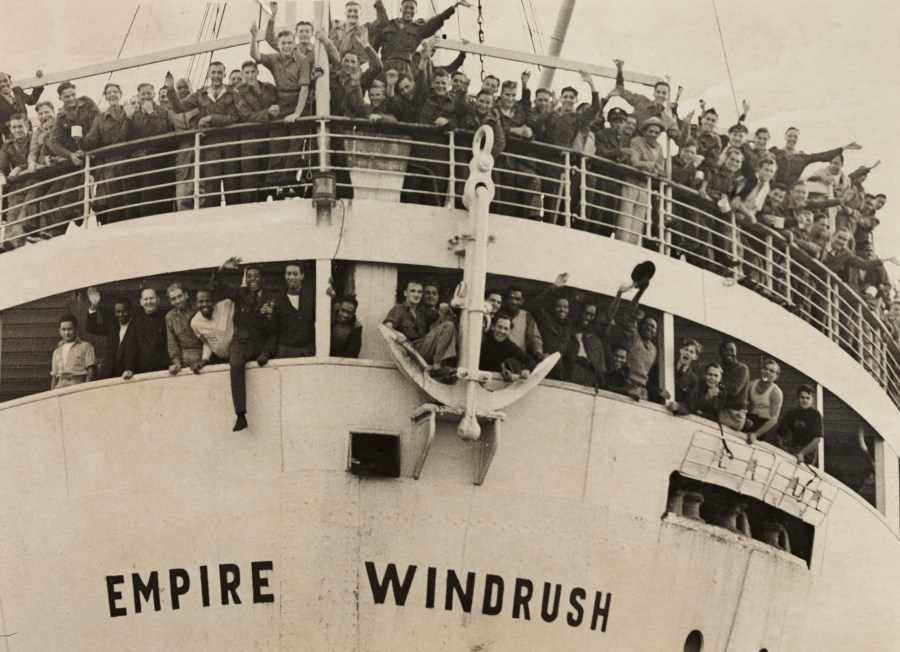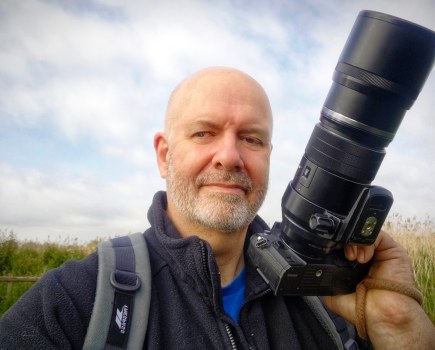On 22 June 1948 the Empire Windrush docked at the port of Tilbury, London, carrying 492 passengers from Britain’s Caribbean colonies. They were among the first to answer the call from the mother country to come and help to rebuild the UK after the war, to staff its hospitals, run its buses and trains, and work in the factories. Many had returned to their home countries after serving in the British armed forces during the war and, unable to find meaningful employment, were lured back to England with ads offering tickets for the sum of £28 10s, and their new status as British citizens, thanks to the British Nationality Act of 1948.
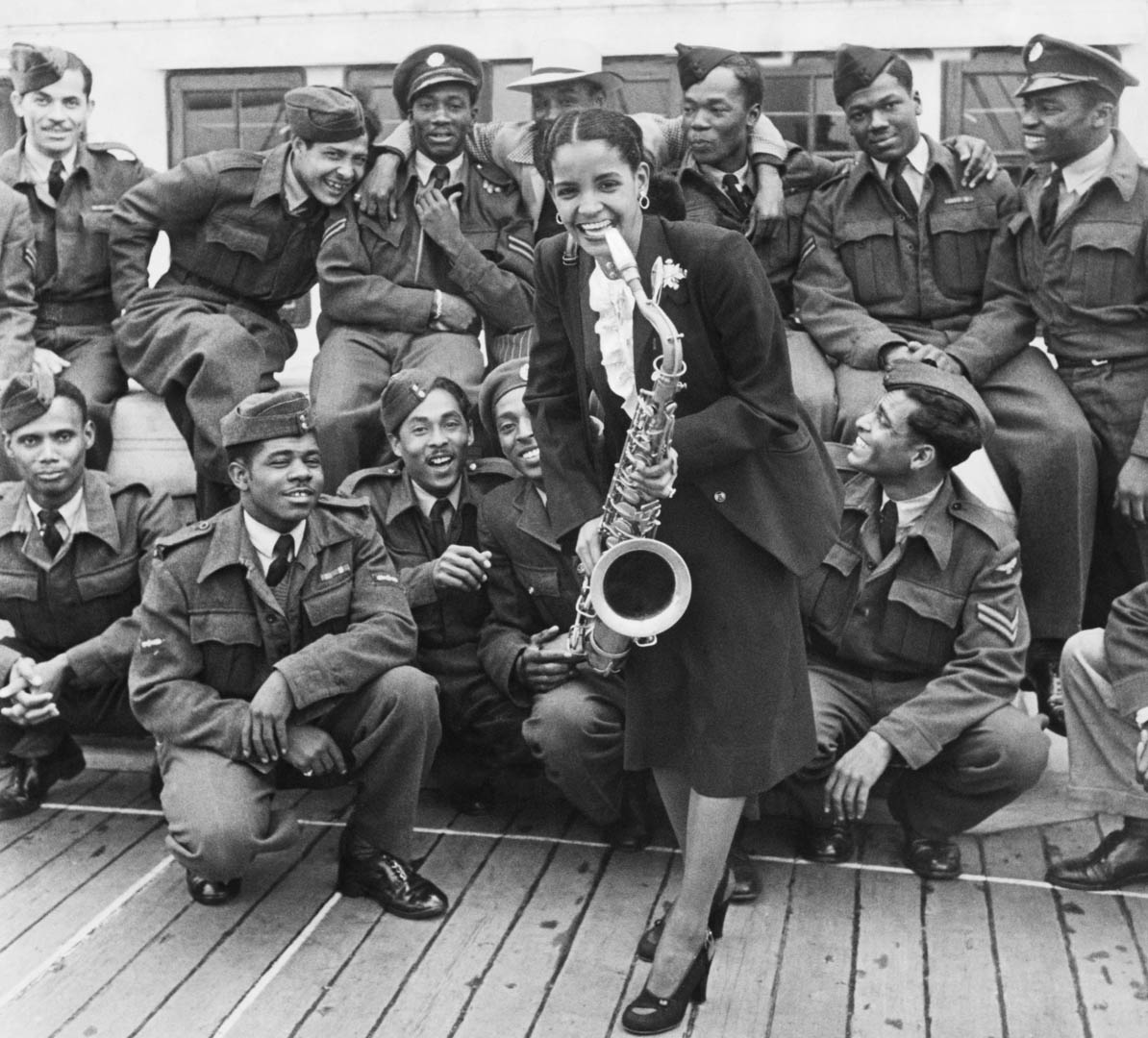
On board the Empire Windrush. Blues singer Mona Baptiste, from Port of Spain in Trinidad, entertains some of the 492 workers from Jamaica, Trinidad and Tobago and other islands, many of them ex-servicemen, who were travelling to the UK to help fill post-war labour shortages. (Photo by Phillip Jackson/Daily Mirror/Mirrorpix via Getty Images)
They braved the weather, food rationing and a frequently hostile native population that often resented their presence and denied them access to jobs and housing. Some politicians offered reassurance to the locals by predicting that these newcomers wouldn’t last a single British winter, but they underestimated their stoic determination to build new lives and a better future for their families.
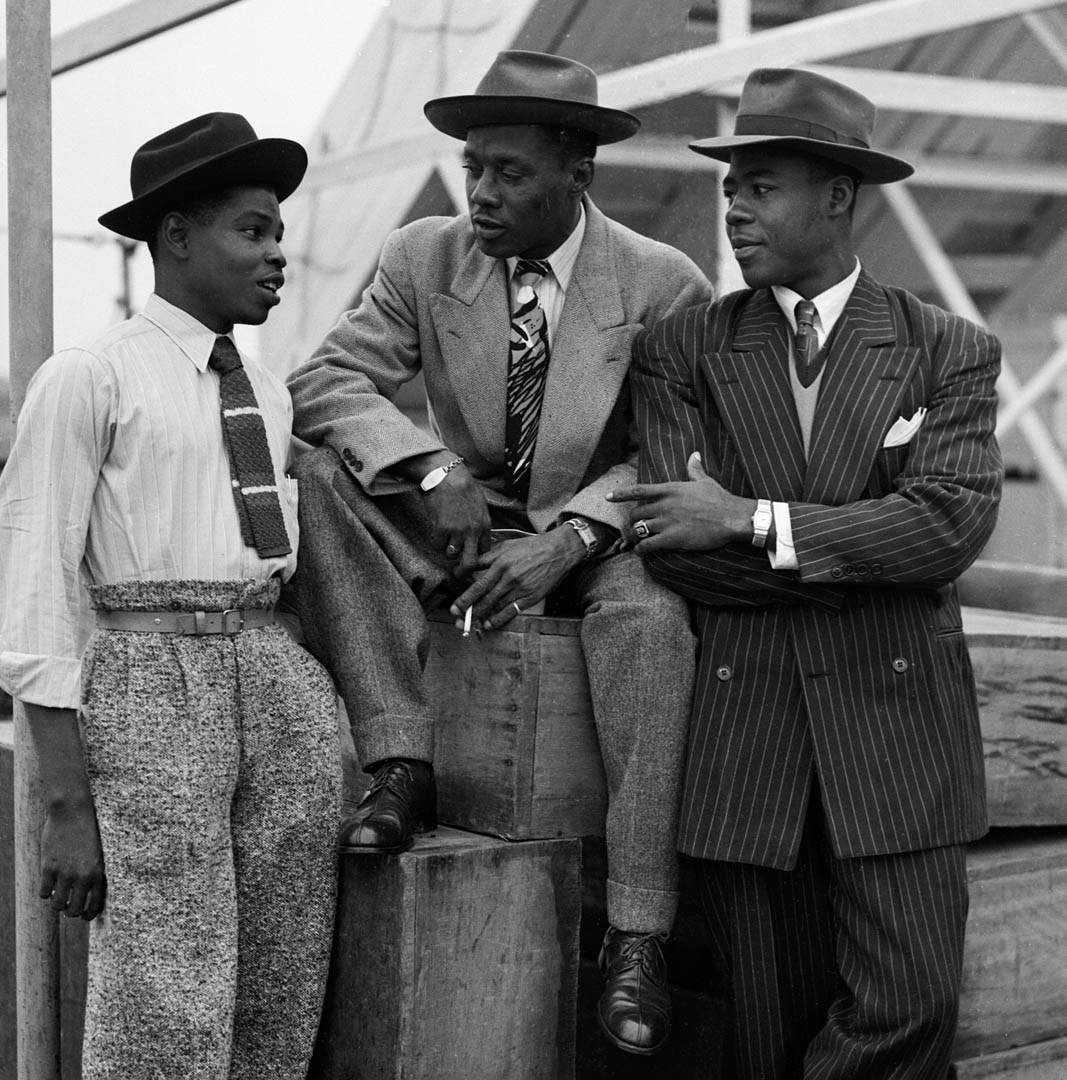
Three Jamaican immigrants (left to right) John Hazel, a 21-year-old boxer, Harold Wilmot, 32, and John Richards, a 22-year-old carpenter, arriving at Tilbury on board the ex-troopship ‘Empire Windrush’, smartly dressed in zoot suits and trilby hats. (Photo by Douglas Miller/Getty Images)
Their struggles laid the foundations for the multi-cultural nation that Britain is today and, while their descendants may only account for around 4% of the UK’s total population, the contribution that they have made to British society is far greater.
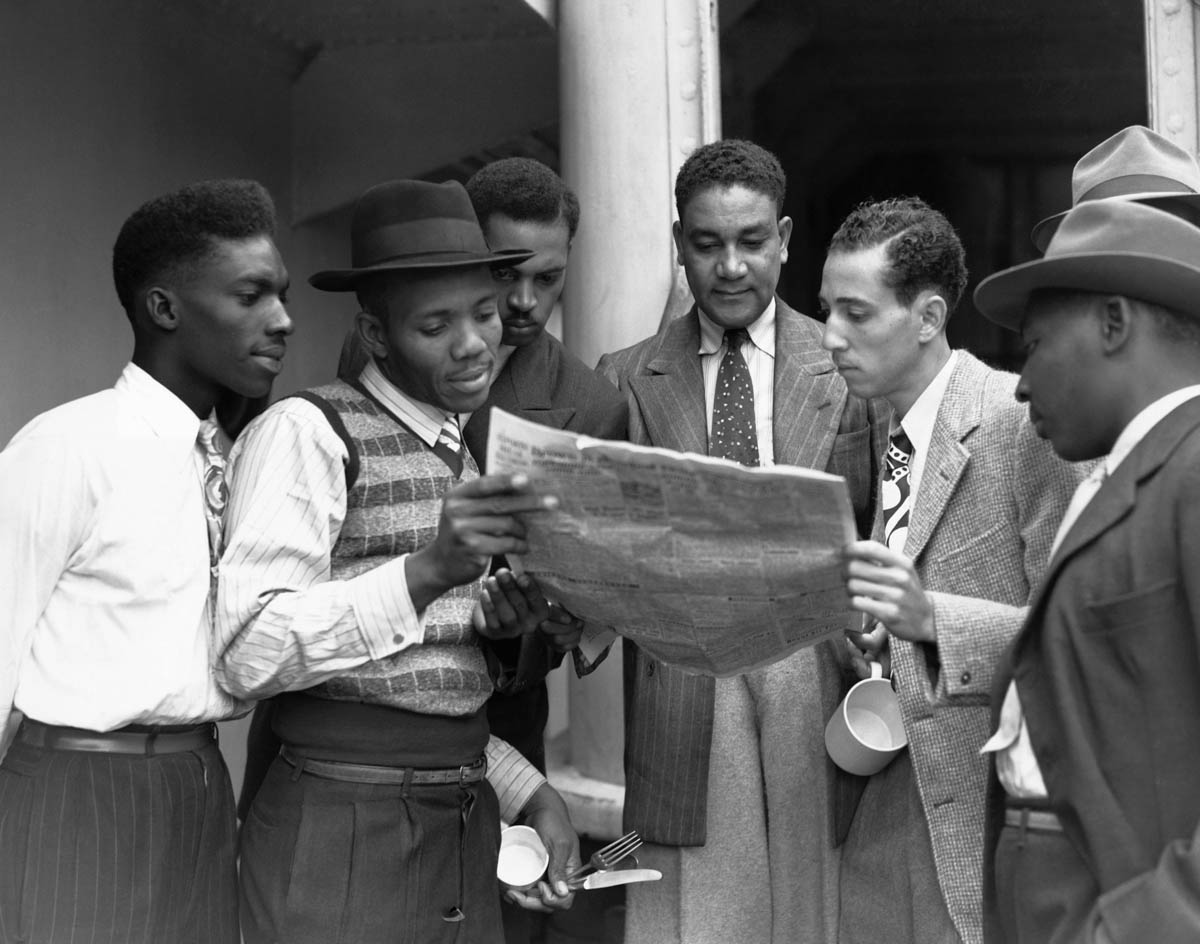
A group of Jamaican men reading a newspaper aboard the HMT Empire Windrush on arrival at Tilbury in Essex, 22nd June 1948. (Photo by Douglas Miller/Keystone/Hulton Archive/Getty Images)
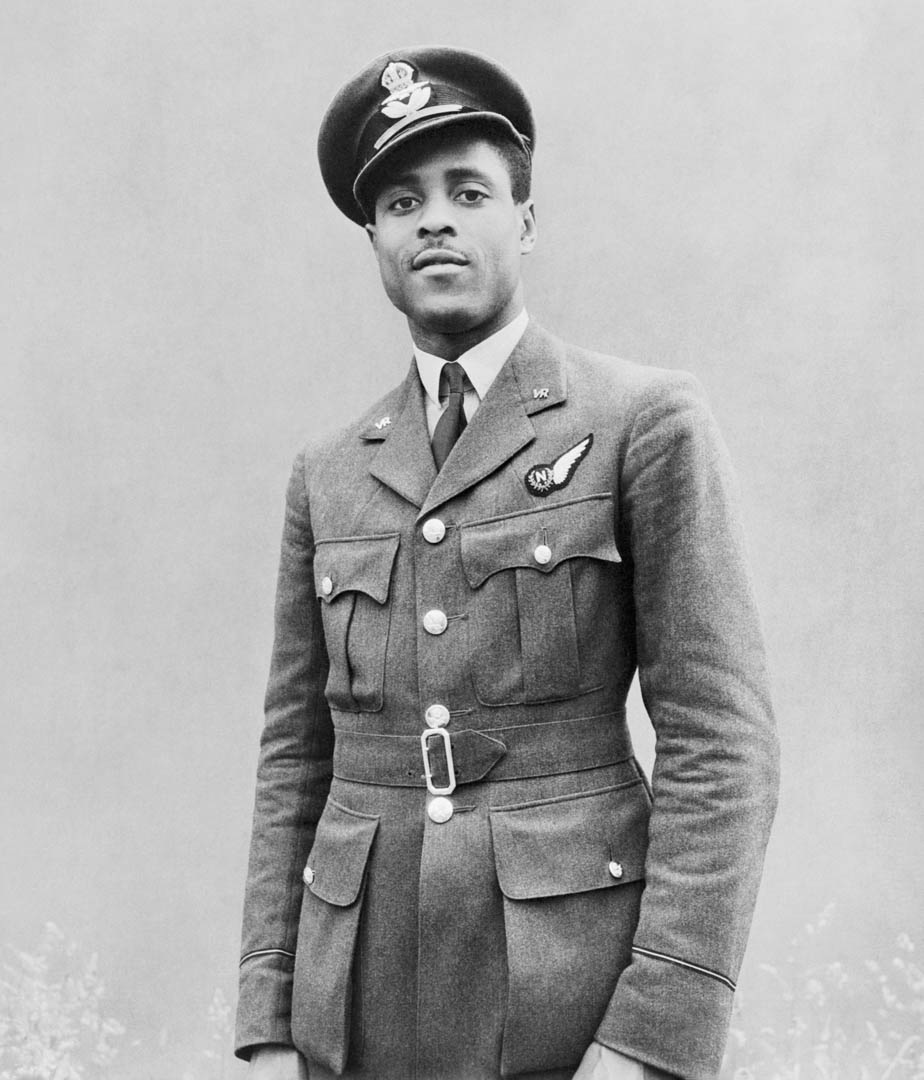
Portrait of Pilot Officer John Smythe RAFVR (Royal Air Force Volunteer Reserve), a newly-qualified navigator, photographed while undergoing training at No 11 Operational Training Unit, Westcott, Buckinghamshire, 1942. Born in Sierra Leone (at that time a British colony), Smythe was one of a few West Africans that served in the RAF during the Second World War. Assigned as a navigator with 623 Squadron, he successfully navigated 26 bombing missions over Germany before being shot down. After he was liberated from a prisoner of war camp, he would go on to become a senior officer on board the Empire Windrush. He was awarded the Order of the British Empire (OBE) in 1978. (Photo by Royal Air Force official photographer/Imperial War Museums via Getty Images)

A group on people sits at tables in a café in London, UK, 1948. (Photo by Keystone Features/Hulton Archive/Getty Images)

A large family living in cramped accommodation. Original Publication: Picture Post – 4825 – Is There A British Colour Bar – pub. 1949 (Photo by Bert Hardy/Picture Post/Hulton Archive/Getty Images)
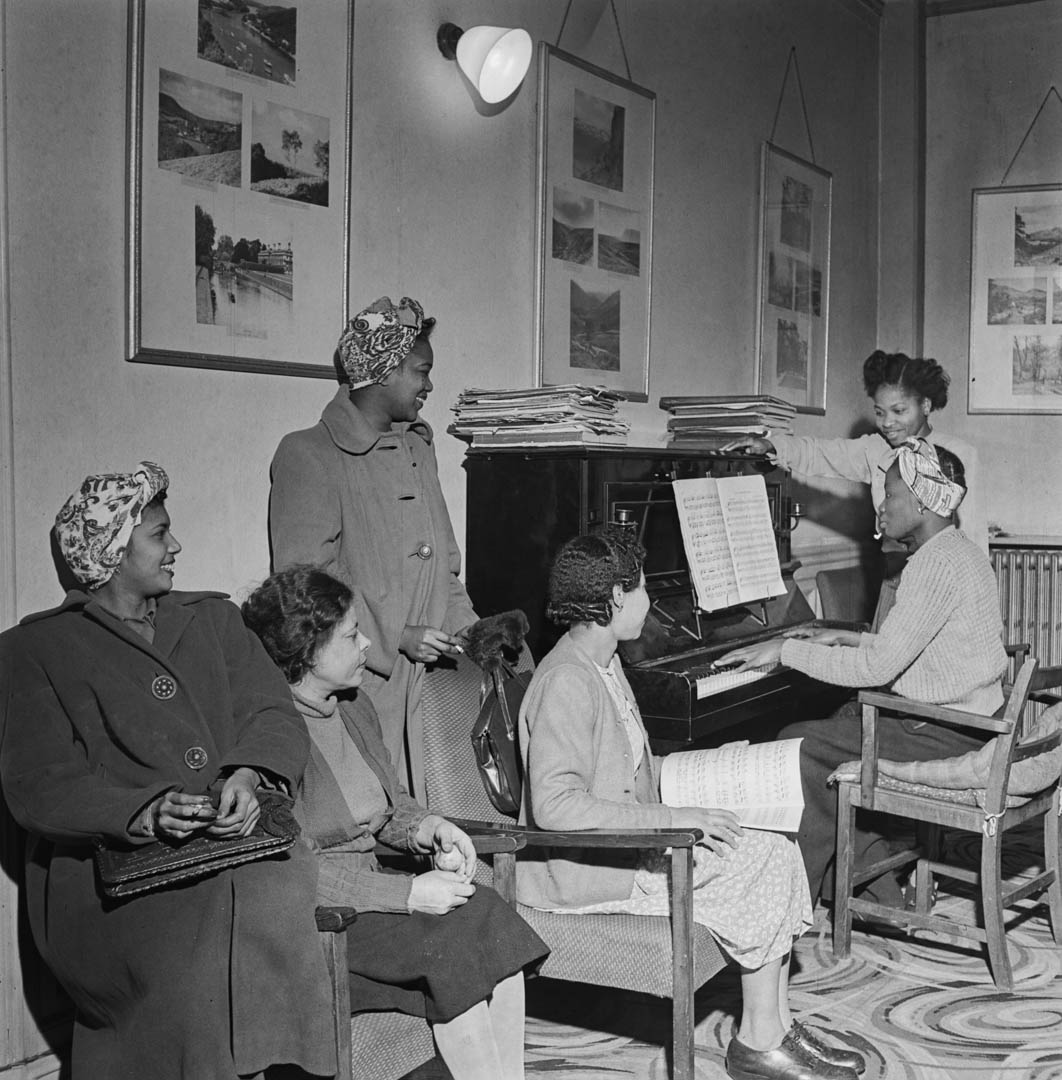
A young woman plays the piano surrounded by a group of women listening, London, UK, 1948. (Photo by Keystone Features/Hulton Archive/Getty Images)

A crowd gathers to watch a black man dancing with a white woman on centre stage at the Paramount Salon de Danse in Tottenham Court Road, London, June 1949. Original Publication: Picture Post – 4825 – Is There A British Colour Bar? – pub. 2nd July 1949 (Photo by Bert Hardy/Picture Post/Hulton Archive/Getty Images)

West Indian immigrants arriving in the United Kingdom, 30th June 1962. (Photo by Daily Herald/Mirrorpix/Getty Images)

27th May 1956: Newly arrived West Indian immigrants in the Customs Hall after their arrival at Southampton in England. Original Publication: Picture Post – 8405 – Thirty Thousand Colour Problems – pub. 1956 (Photo by Haywood Magee/Picture Post/Hulton Archive/Getty Images)
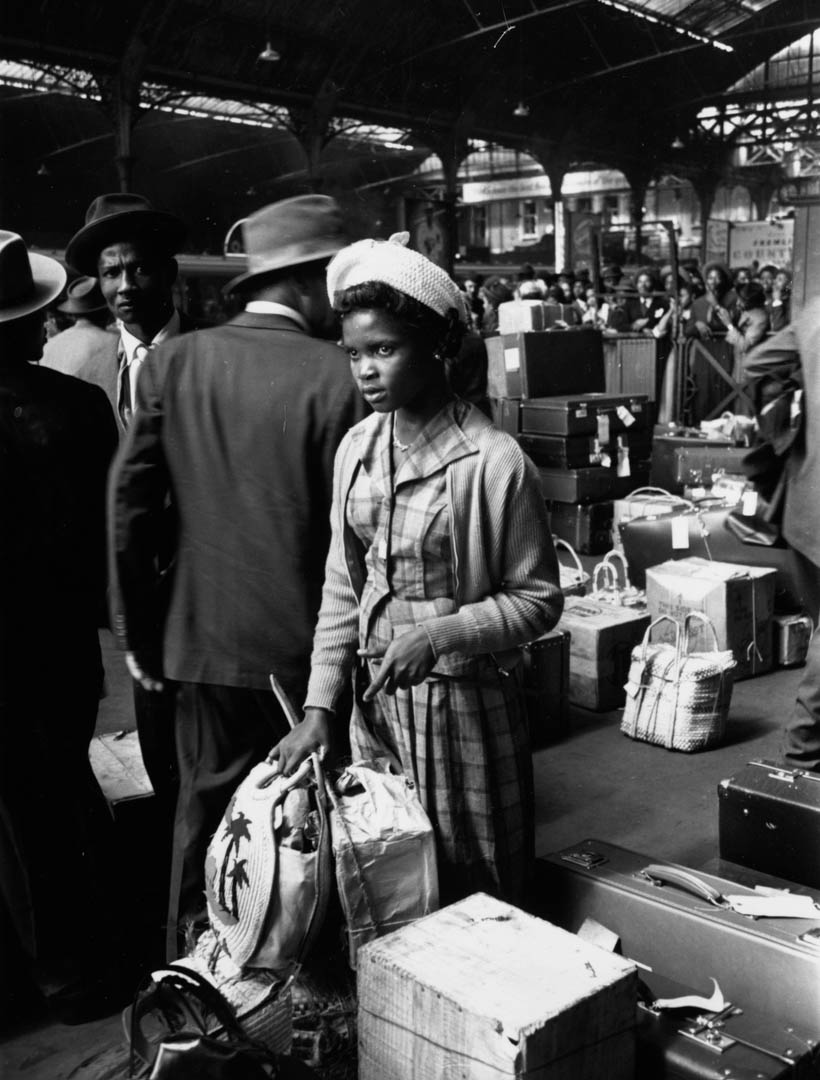
27th May 1956: West Indian immigrants at Victoria railway station, London, after their arrival at Southampton. Original Publication: Picture Post – 8405 – Thirty Thousand Colour Problems – pub. 1956 (Photo by Haywood Magee/Picture Post/Hulton Archive/Getty Images)
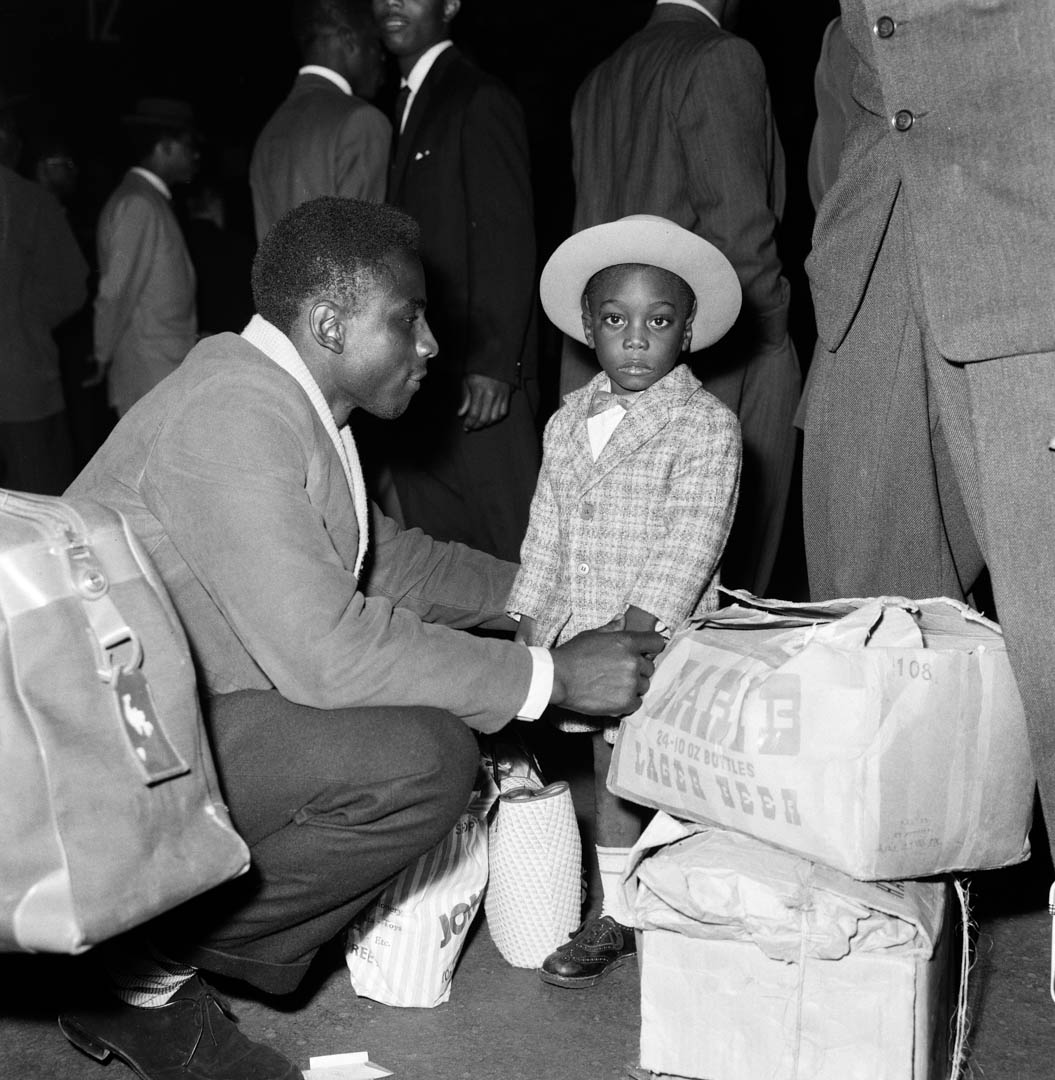
Nearly 1000 West Indian immigrants arrive in three boats trains at Waterloo Station. Many brought with them packing cases containing treasured possessions, 15th October 1961. (Photo by Daily Mirror/Mirrorpix/Getty Images)
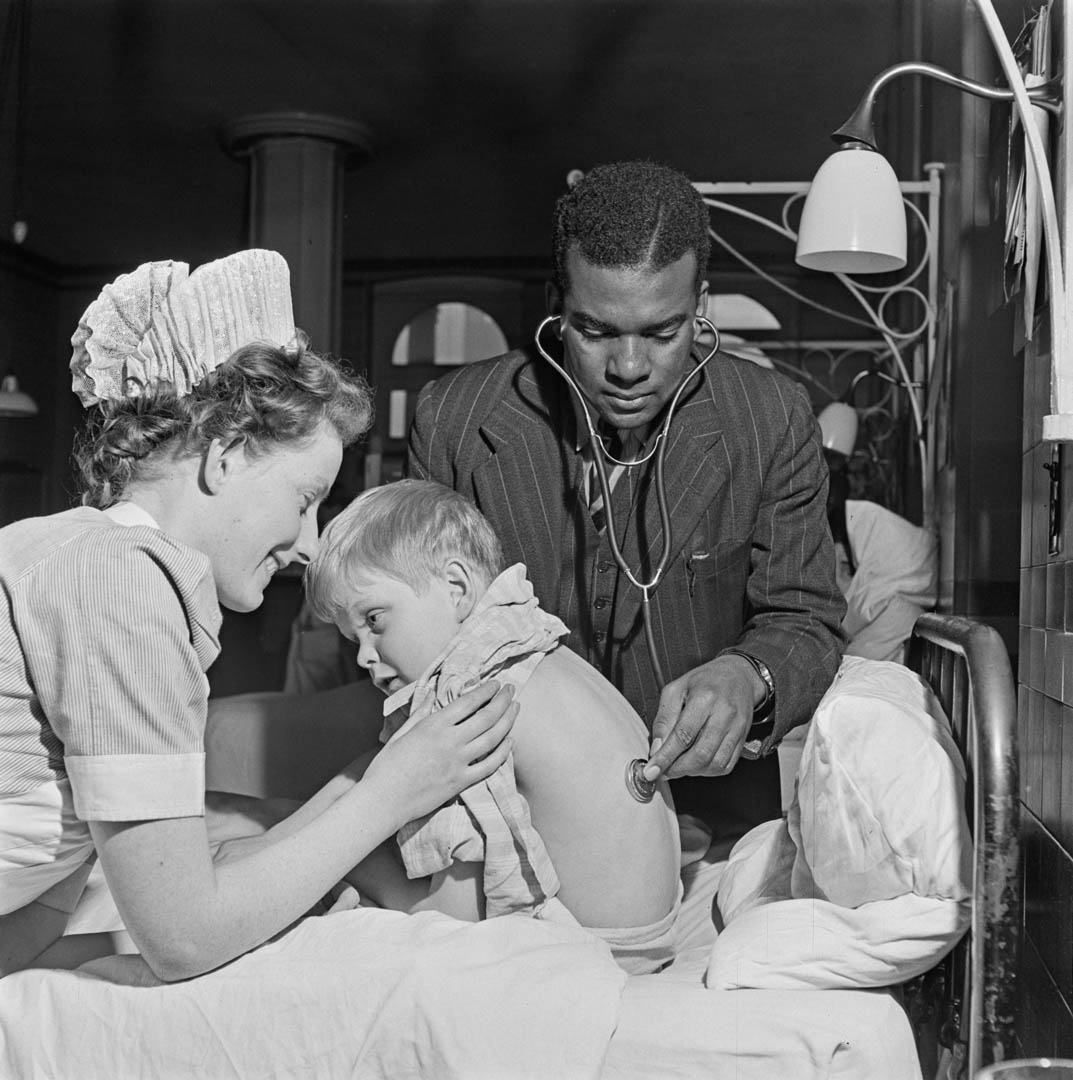
A doctor examines the back of a young patient with a stethoscope as a nurse helps him holding his shirt up at a London hospital, UK, 1948. (Photo by Keystone Features/Hulton Archive/Getty Images)
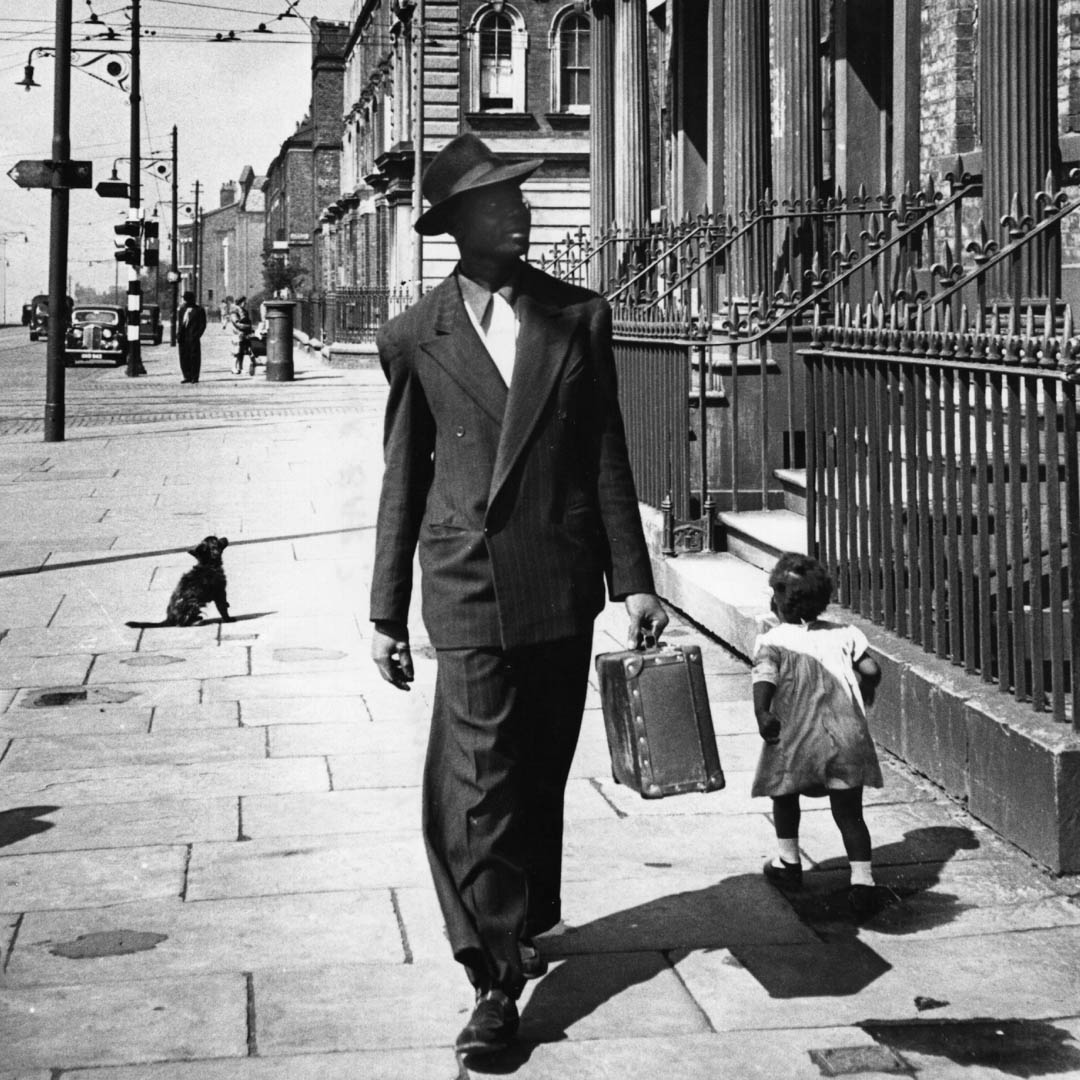
2nd July 1949: A West Indian immigrant looking for accommodation at Upper Parliament street, Liverpool. Original Publication: Picture Post – 4825 – Is There A British Colour Bar – pub. 1949 (Photo by Bert Hardy/Getty Images)

West Indian-born British man Asquith Xavier (1920 – 1980) begins his first day’s work as a guard at Euston Station in London, becoming the first non-white guard at the station, UK, 15th August 1966. Xavier had had to overcome discrimination and a colour ban by the staff at Euston. (Photo by Les Lee/Express/Hulton Archive/Getty Images)
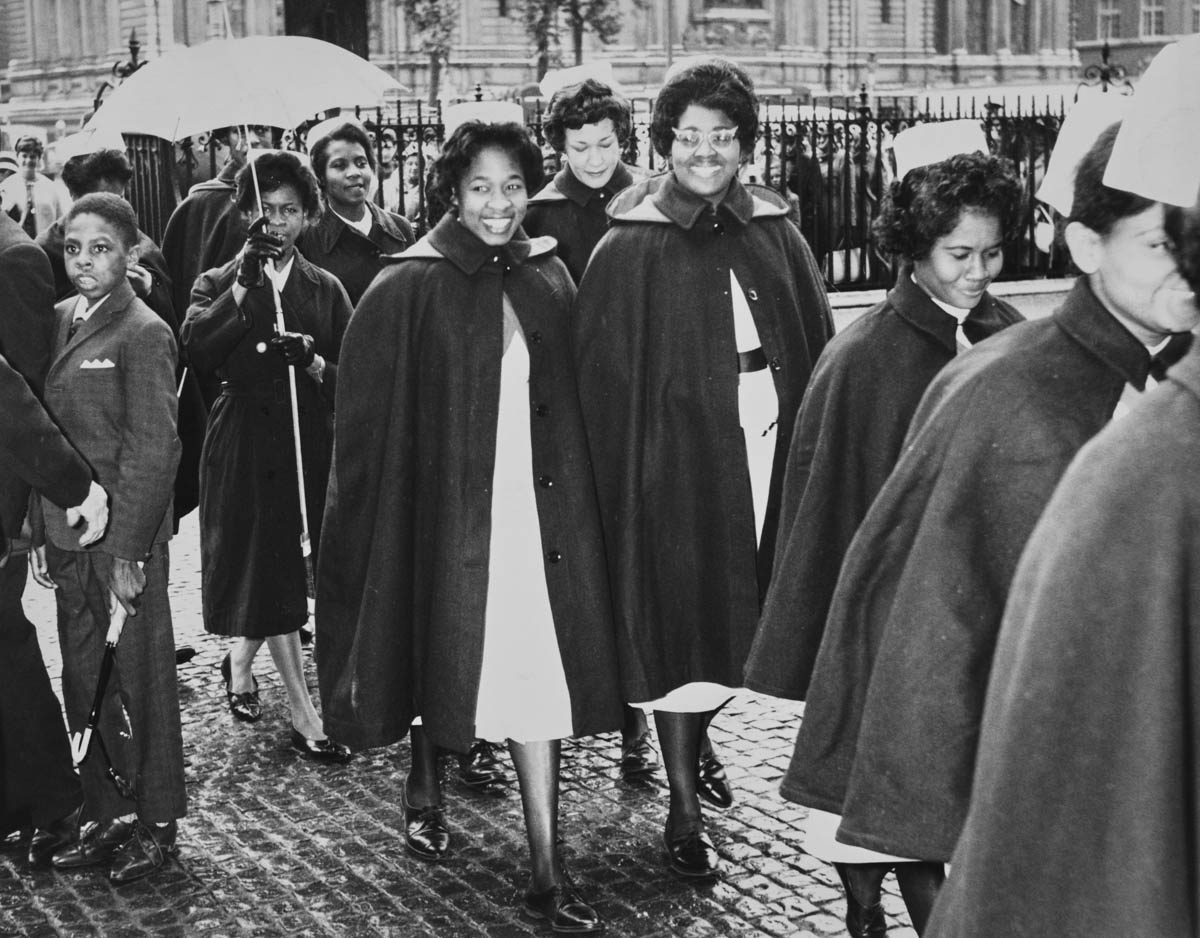
Jamaican nurses arriving at Westminster Abbey for the Jamaican independence thanksgiving service; London, England, United Kingdom, 7th August 1962. (Original Caption) “Thanksgiving Service At Westminster Abbey For Jamaica’s Independence: A service of thanksgiving for the independence of Jamaica was held in London today at Westminster Abbey. The Duke of Gloucester, representing the Queen, attended the service.” (Photo by Archive Photos/Getty Images)
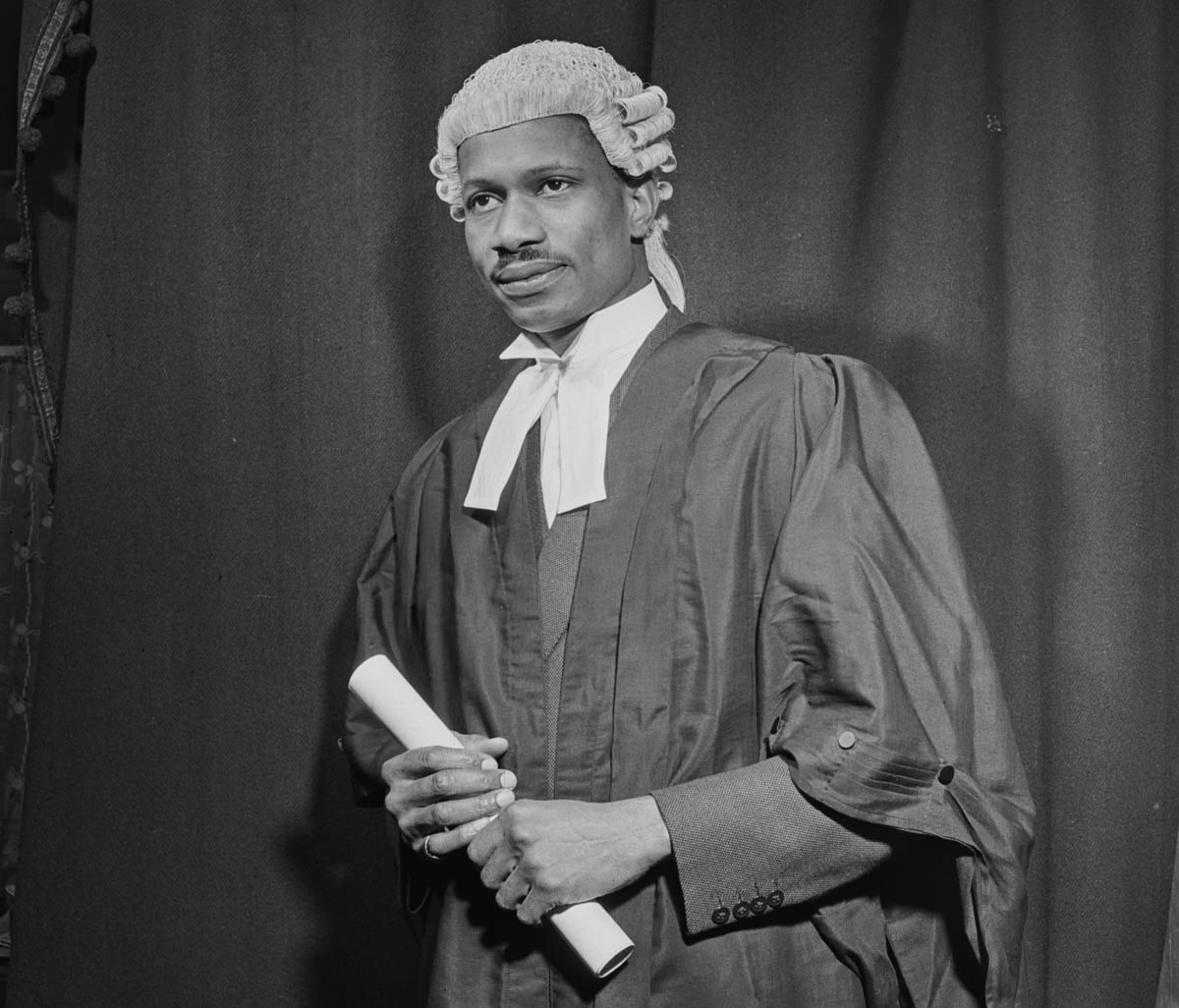
A barrister wearing traditional bar clothing and wig holding a rolled paper parchment, London, UK, 1948. (Photo by Keystone Features/Hulton Archive/Getty Images)

Women sits at tables having a meal at a support centre for Black women in London, UK, 1948. (Photo by Keystone Features/Hulton Archive/Getty Images)
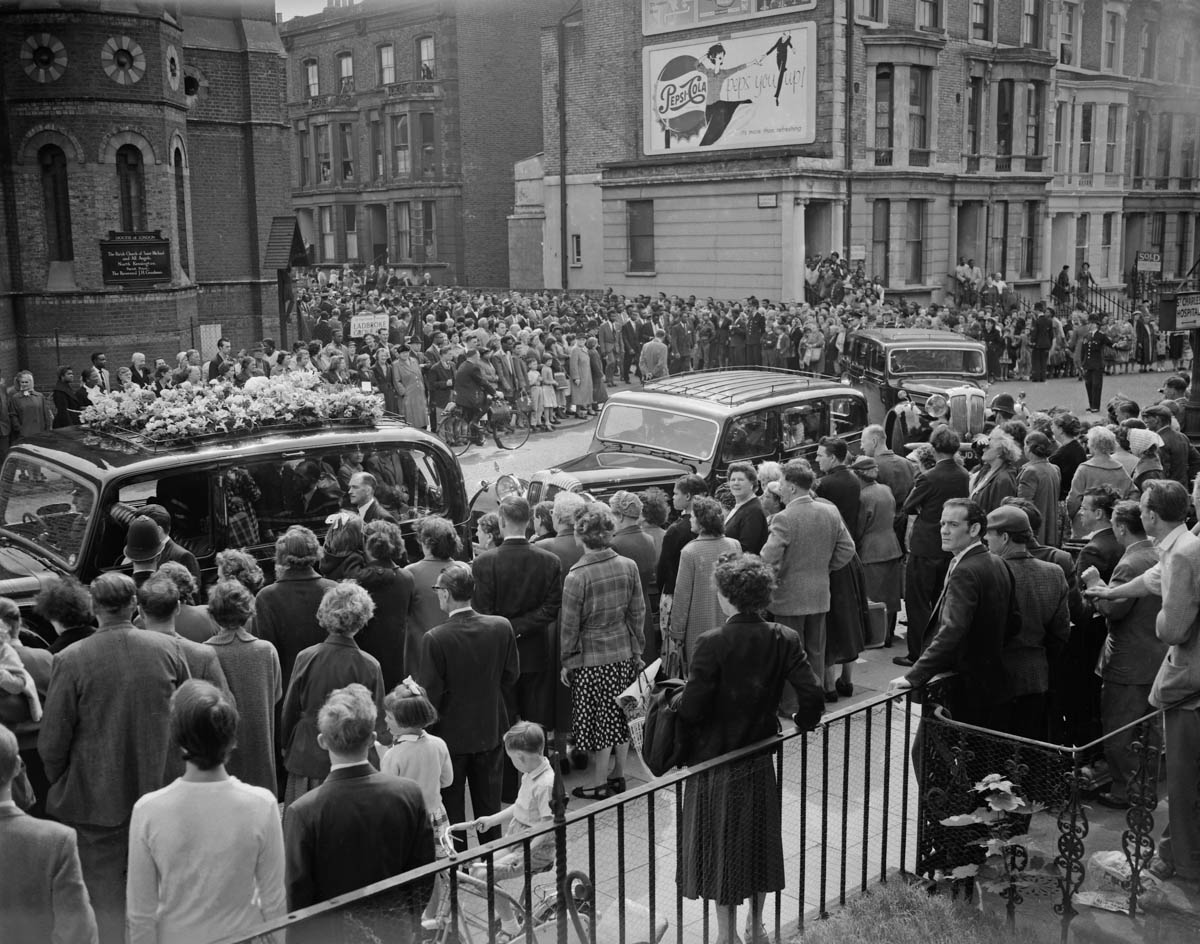
People gathered outside St Michael and All Angels church in Ladbroke Grove for the funeral procession of Kelso Cochrane in London, on June 6th, 1959. Cochrane, an immigrant from Antigua, was murdered by a gang of white youths while walking home in Notting Hill. (Photo by Edward Miller/Keystone/Hulton Archive/Getty Images)
Related content:
Follow AP on Facebook, Twitter, Instagram, YouTube and TikTok.

